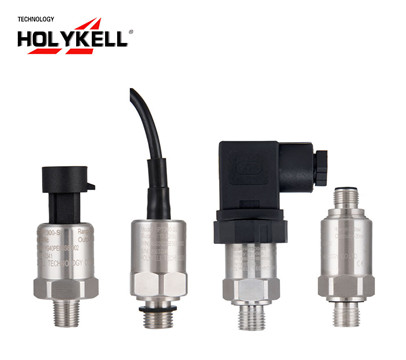Piezoresistive silicon VS Ceramic VS Sputtered Film VS Strain VS Ceramic Capacitive Pressure Sensors: Which One to Choose?
Pressure sensors are important components in a variety of industries and applications. Several of the most common pressure sensors are types of piezoresistive silicon, sputtered thin film, ceramic thick film, strain, and ceramic capacitive. Each type has its own advantages and disadvantages.
In this article, we will conduct a comparative study of these pressure sensors and discuss their advantages and limitations, as well as the applications they can be adapted to.
Piezoresistive Silicon Pressure Sensor
- High accuracy, good stability, and high sensitivity
- Suitable for small pressure measurement, static pressure measurement, and low-frequency dynamic pressure measurement
- Large signal output

Limitations
- Susceptible to temperature drift, requiring temperature compensation
- Not suitable for high-pressure measurements
- Vulnerable to impact
- Prone to deformation under high-frequency dynamic pressure
Ceramic Thick Film Pressure Sensor
- Relatively low cost
- Good corrosion resistance
- Wide operating temperature range
- Generally suitable for medium and large pressure measurements

Limitations
- Accuracy is generally not high
- Temperature drift typically stays within 1% F.S
- Fragile large diaphragm
- Not suitable for engineering hydraulics
- Requiring buffer damping in variable frequency water supply applications
Strain Pressure Sensor
- Low cost with mature technology
- Suitable for medium and large pressure measurements
Limitations
- Weak overload capability
- Large temperature drift
- Unsuitable for measuring small range pressures
Sputtered Thin Film Pressure Sensor
- Known for high long-term stability and reliability
- All the above-mentioned limitations are not included

Limitations
- Not suitable for pressure ranges less than 1 MPa
Ceramic Capacitive Pressure Sensor
- Designed for extreme environments with aggressive media and overload potential
- Offering excellent long-term stability and minimal hysteresis
- High sensitivity
- Less affected by temperature variations compared to other technologies
- Suitable for applications with common temperature changes

Limitations
- For small pressure measurements due to limited high-end range
Conclusion
Each type of pressure sensor has its own significance and specific application domain. They possess distinct characteristics and performance attributes, which render them suitable for a variety of applications.
Still not sure which one to choose? Contact our professional engineers for pressure sensor type selection.
FAQs
What Piezoresistive Pressure Sensors do Holykell have?
How to Select a Diffused Silicon Pressure Sensor?
TOP 10 Pressure Transmitter Brands Globally





